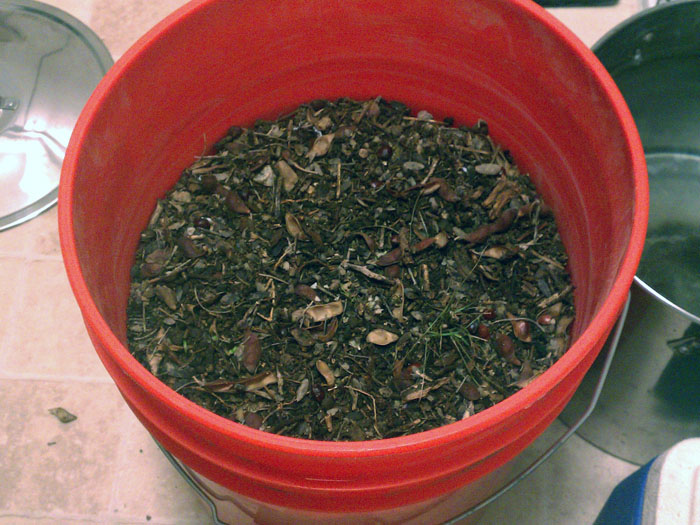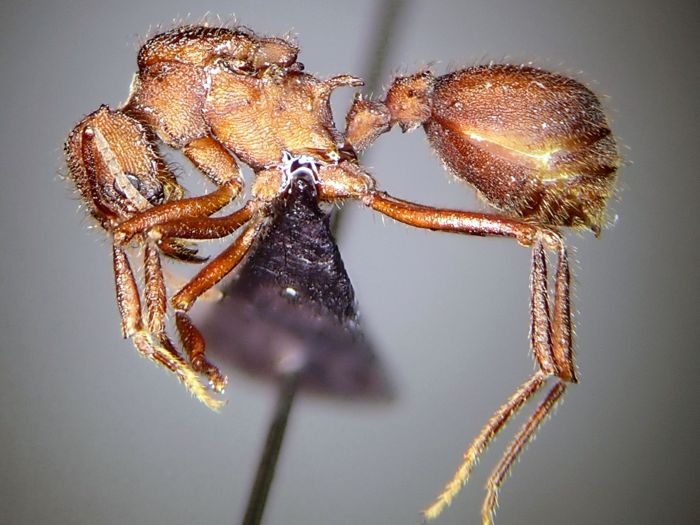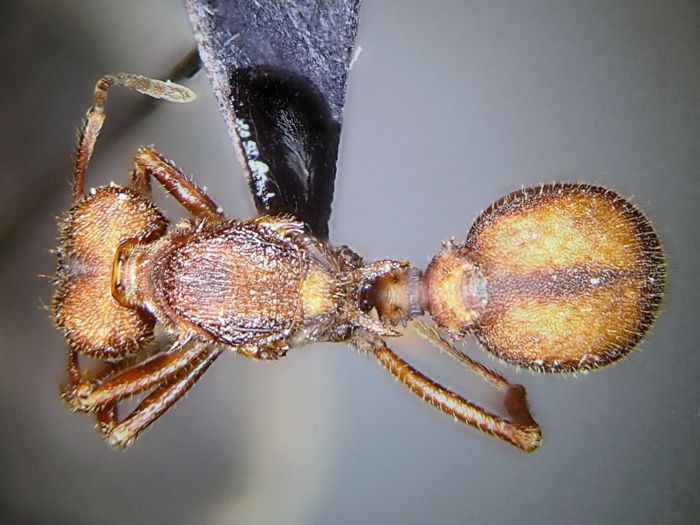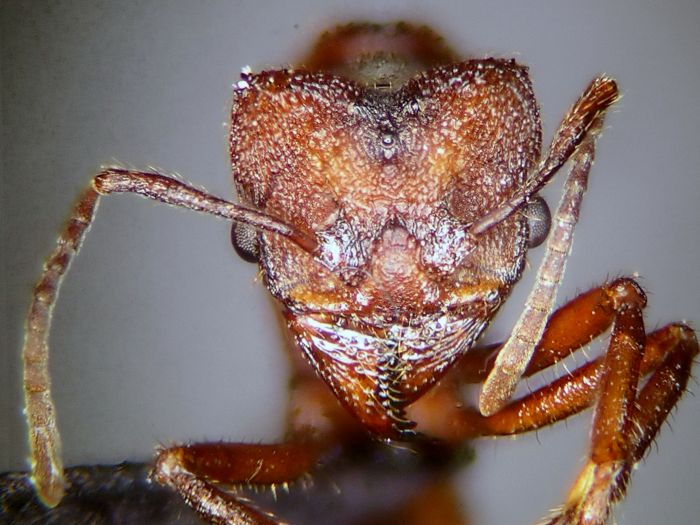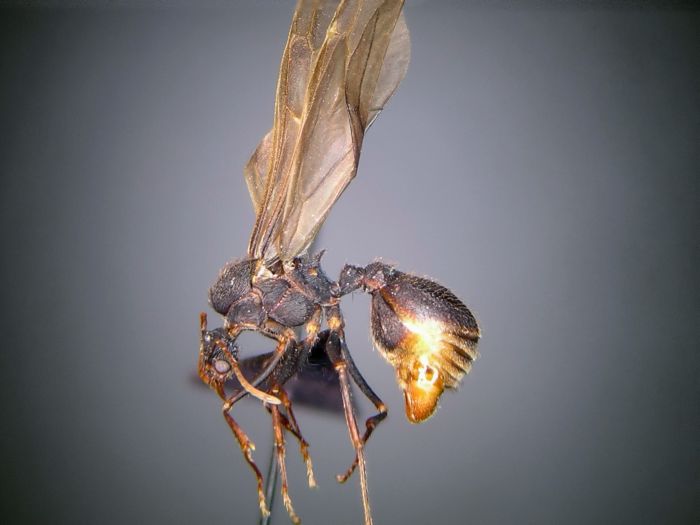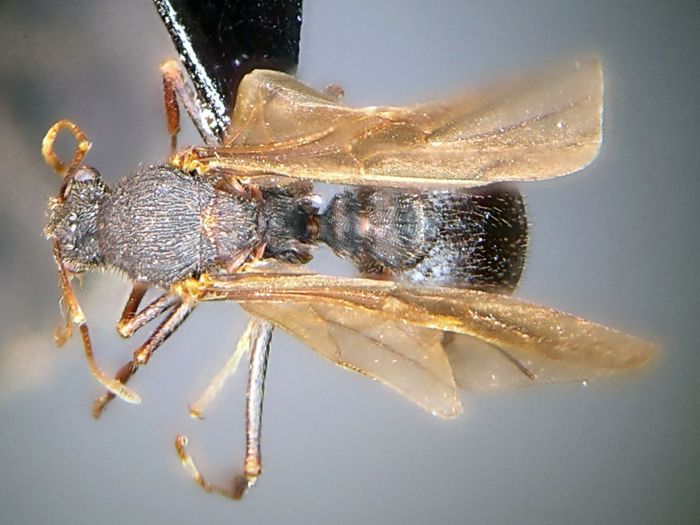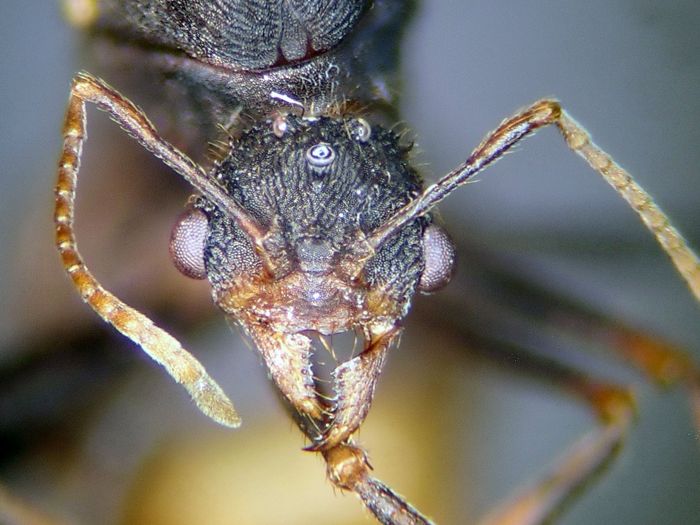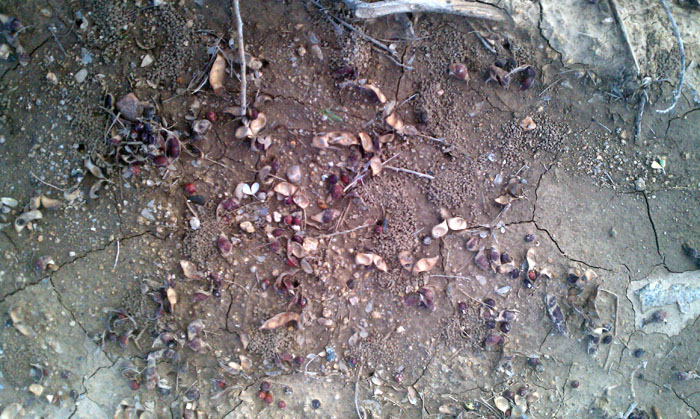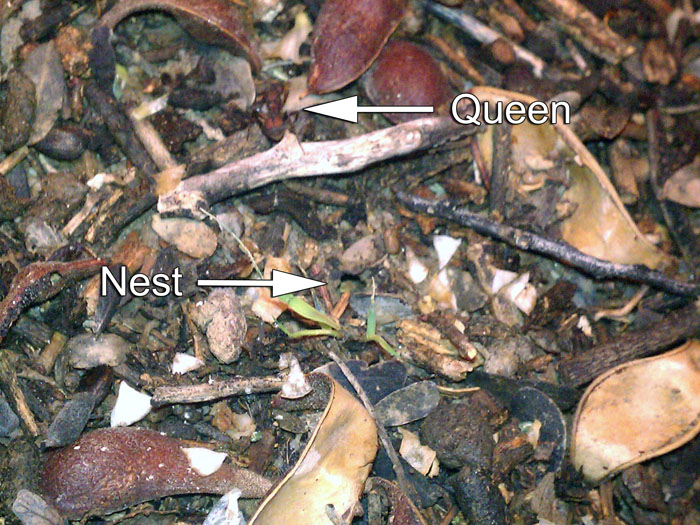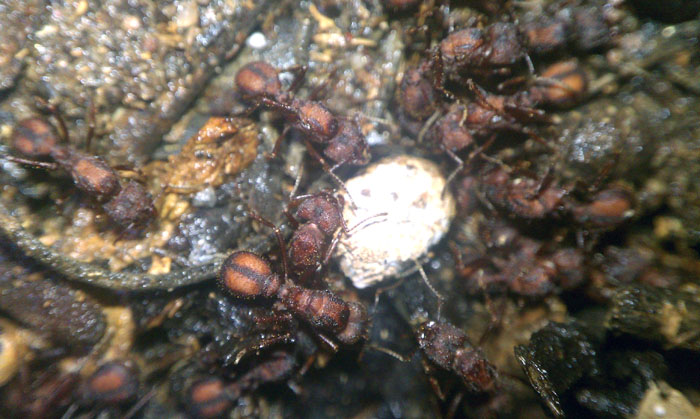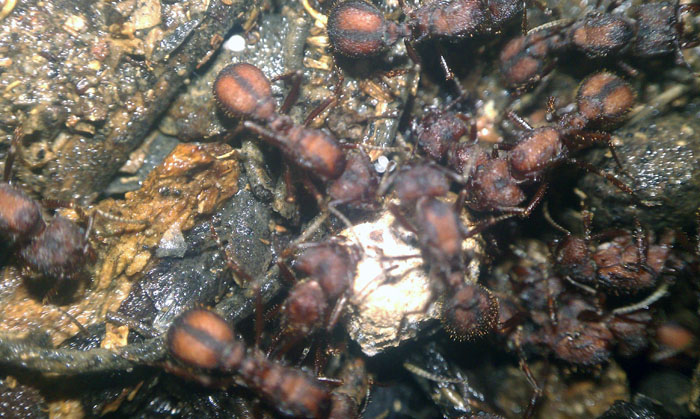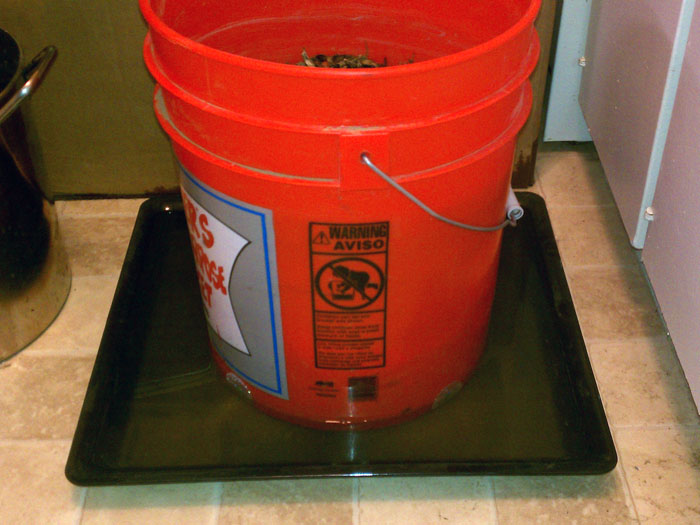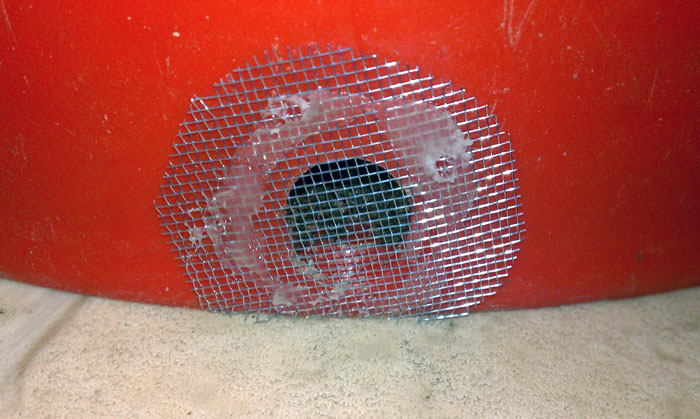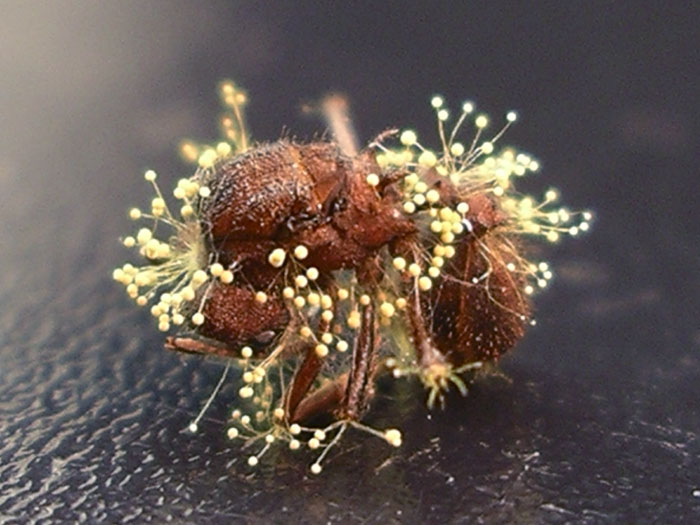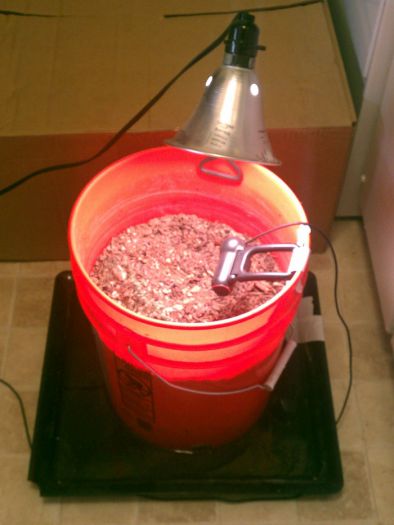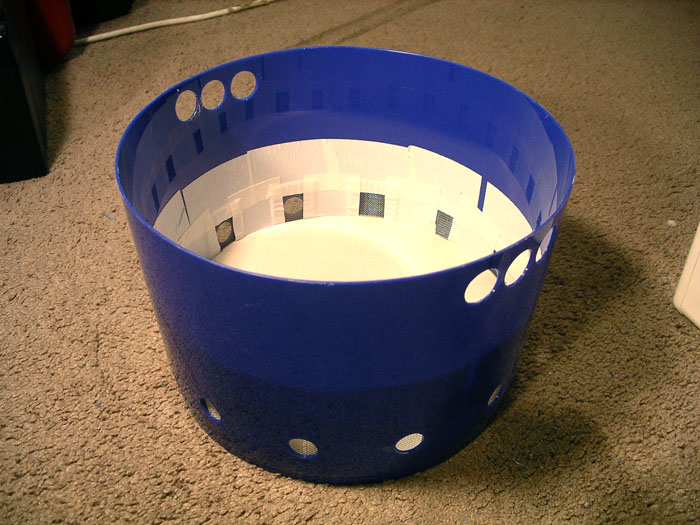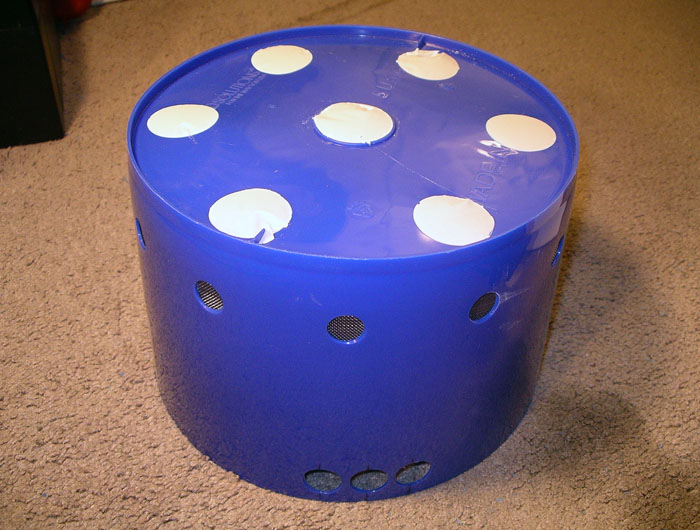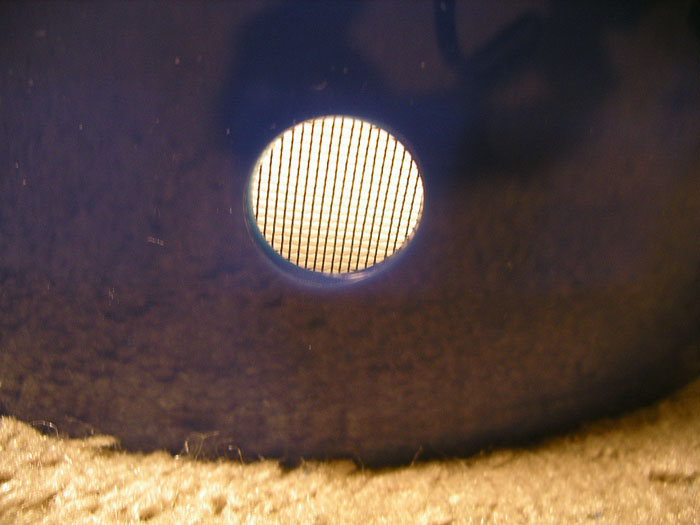Update 9-22-2013 Today I went back to the spot where we found these queens with
Anhzor and
Pogoqueen from the forum. I had a plan to actually dig up one of the
Acromyrmex founding chambers in hopes of getting a brand new queen along
with its new fungus garden. I took with me a 5-gallon bucket, some trash bags, and a shovel.
First we stopped at the spot where we originally found all the queens and I immediately started looking for the spot with the most founding chambers dug in a 5-gallon bucket space; I figured this would give me the highest chance of digging up a founding nest in its entirety. We looked around there for a while, then walked around to some of the other Ironwood trees around the area and noticed that there were tons of founding chambers under every other tree out there too. We didn't notice this the first time we were out there, so it almost looked as though more may have flown after we were there. I wasn't sure what the mortality rate would be for all these queens, so I was afraid I might possibly pick a spot with nothing but dead queens.
I continued to look around for a while and then to my surprise found a queen out foraging. I watched it for a little while until it finally went back into its nest. Since I knew for sure there was a live queen in that nest, I decided that would be the spot I would dig up. I started digging all around the nest until I had a 5-gallon bucket sized chunk of dirt left surrounding the entrance to the nest. Now I had no idea which direction that tunnel could have gone, so I just kept the hole in the very center and figured that would be my best chance. Also, if there happened to be a lot more live queens out there than I realized, it was entirely possible that I could be digging up one from a nest with an entrance outside of the space that I was focusing on--who knows. Shortly after this, we began finding queens walking around all over in the piles of dirt that I dug up, so this meant there actually were plenty of queens still alive out there. This also tells us that these queens founding chambers were definitely no more than a foot and a half deep at this point. The dirt in this spot was pretty hard and dry for the first 12 inches or so, and then below that, it was much more soft and damp.
In order to lower this giant dirt clod down into the bucket without damaging it more than I already did while trying to remove the large rocks from the side of it, I first picked it up and dropped it into a couple trash bags, then used those to lower it down into the bucket. This didn't go too well at first because it turned out to be a bit too large in diameter, and while fixing this problem, the majority of the more damp dirt fell off the bottom, leaving me with mainly just the first 12 inches of dirt. This was especially not good because in that dirt I saw two queens wandering around, and now I was quite sure I had just ruined the entire experiment I worked so hard on. It seemed to me that there would be no way any of these queens would have their fungus garden in the dry section of that dirt, but I took it home anyways in hopes that I was wrong.
Later that evening after the sun went down, we started seeing TONS of
Acromyrmex queens wandering around by their nests, so we now know these founding queens obviously do their foraging at night. Since we figured these queens would probably be a lot healthier than the ones we have already had for two weeks, we decided to gather a bunch more. As far as I know, like every year, most all of these queens won't survive for very long in the wild anyways. In the end,
Anhzor and I both left there with about 40 more queens.
Once I got home, I put four of the queens in a test tube, another eight or so queens in a larger test tube, and the rest all in one acrylic container. I added some of the leaf litter I collected from the spot into the acrylic container and wet it down.
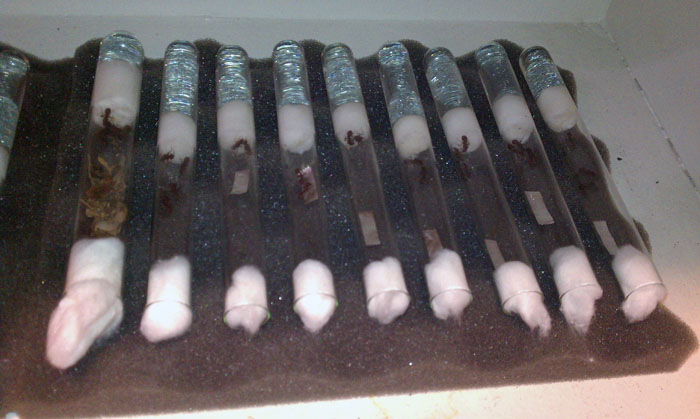
As for the bucket, I carefully flattened the top out and added some dirt around the edges where it needed it. I then sprinkled leaf litter all around on the surface to make it just like their habitat. I poured a little bit of water all around in the bucket to wet it down some, and set it in my kitchen. I didn't have much hope for the bucket idea after dropping the moist part of the dirt off the bottom, but I was just going to wait and see; with as many founding nests as there were out there, there was still a chance I had one somewhere in there.
